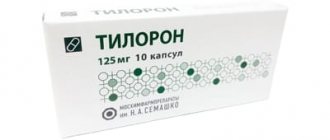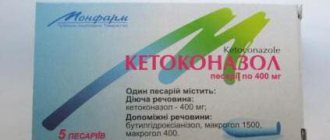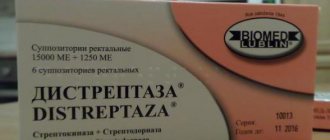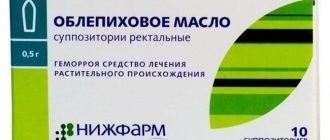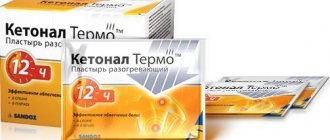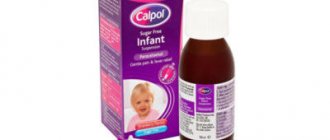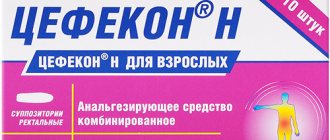Pharmacodynamics and pharmacokinetics
Low concentrations of the drug have a bactericidal effect on chlamydia, mycobacterium tuberculosis , rickettsia, legionella, mycobacterium leprosy. High concentrations of the drug are active against gram-negative flora.
Rifampicin is a first-line anti-tuberculosis drug. High activity is observed when exposed to staphylococci, clostridia, gonococci, meningococci . The drug acts on extracellular as well as intracellular bacteria.
The mechanism of action is based on the inhibition of RNA polymerase of microorganisms. Cross-resistance with other antibacterial agents has not been recorded. With drug monotherapy, rapid development of selection of microorganisms to the antibiotic is observed.
Pregnancy and lactation
Rifampin passes into breast milk, so you should not breastfeed your baby while using this medication unless, in the opinion of your doctor, the expected benefit outweighs the potential risk to the baby.
Do not take Methadone-Zentiva if you are or are already pregnant. Always consult your doctor about pregnancy. During breastfeeding, methadone gets breast milk into the baby's body
This may be acceptable if your doctor feels it is safe to take your specific situation into account
Methadone negatively affects the ability to drive and operate machinery. Patients using methadone should not drive. Methadone-Zentiva contains maltitol. If you have been told that you have an intolerance to certain sugars, consult your doctor before taking this medicine.
Side effects of Rifampicin
Digestive tract: pseudomembranous enterocolitis , vomiting, loss of appetite, nausea, increased levels of liver enzymes, hepatitis, hyperbilirubinemia, diarrhea, erosive gastritis .
Nervous system: disorientation , decreased visual acuity, headache, ataxia.
Genitourinary system: interstitial nephritis, nephronecrosis.
hyperuricemia , myasthenia gravis, leukopenia, allergies, exacerbation of gout, dysmenorrhea , porphyria infection is possible
With irregular use of the drug, it is possible to develop a flu-like condition and the following side effects: myalgia , chills, fever, dizziness, headaches.
Instructions for use of Rifampicin (Method and dosage)
The drug is taken orally and administered intravenously.
Rifampicin tablets, instructions for use
Take half an hour before meals, on an empty stomach.
In the treatment of tuberculosis, this medicine must be combined with other anti-tuberculosis medications (ethambutol, pyrazinamide, isoniazid). Adults are prescribed 10 mg/kg once every 24 hours. No more than 1200 mg per day, for children - no more than 600 mg.
Combination of tuberculosis with HIV, damage to the spinal column by the tuberculosis process with neurological symptoms, disseminated tuberculosis, tuberculous meningitis: 2 months Rifampicin is used with pyrazinamide, isoniazid, ethambutol, streptomycin, the next 7 months the antibiotic is combined with isoniazid.
If mycobacteria are detected in sputum or pulmonary tuberculosis, the patient is prescribed one of three antimicrobial therapy regimens, used in combination with other drugs.
Multibacillary types of leprosy (borderline, lepromatous, mixed): 600 mg once a month along with dapsone 100 mg once a day and clofazimine (300 mg once a month, 50 mg daily).
Pausibacillary types of leprosy (borderline tuberculoid, simple tuberculoid): once a month 600 mg along with dapsone 100 mg daily, the course of therapy is designed for six months.
Therapy for brucellosis: a single dose of 900 mg on an empty stomach in the morning along with doxycycline , the course is designed for 45 days.
Prevention of meningococcal meningitis: every 12 hours 600 mg, course for 2 days.
Using the solution
IV adults are prescribed 600 mg per day, children 10 mg per kg once a day. The maximum dose for intravenous administration is 600 mg.
Indications for use
- All forms of tuberculosis and tuberculous meningitis (as part of combination therapy);
- Infectious and inflammatory diseases caused by microorganisms sensitive to rifampicin, including bronchitis, pneumonia, osteomyelitis, leprosy, brucellosis, biliary and urinary tract infections (including pyelonephritis), acute gonorrhea, etc.;
- MAS infection;
- Meningococcal meningitis (prevention for Neisseria meningitidis bacilli carriers and people who have been in close contact with the patient).
In addition, Rifampicin has a virucidal effect on the rabies virus, which is manifested by a complete or partial loss of its biological activity, and also suppresses the development of rabies encephalitis caused by this virus. Given these properties, the drug is often used as part of complex therapy for rabies during the incubation period - before the first signs of the disease appear.
Interaction
Rifampicin reduces the activity of digitalis drugs, oral hypoglycemic medications, anticoagulants , contraceptives, antiarrhythmic drugs (tocainide, pyrmenol, disopyramide, mexiletine, quinidine), phenytoin, dapsone, glucocorticosteroids, ketoconazole, dloramphenicol, sex hormones, benzodiazepines, nortriptyline, hexobarbital, cyclosporine, cimetidine , epalapril, BMCC, beta-blockers, azathioprine (rifampicin can accelerate metabolism due to the induced induction of certain enzymes of the liver system).
Ketoconazole , anticholinergics, opiates, and antacids reduce the bioavailability of the antibiotic.
When taking pyrazinamide or isoniazid simultaneously, the hepatotoxic effect increases.
PAS drugs can be prescribed 4 hours after administration of rifampicin to prevent absorption.
Pharmacological properties
The therapeutic effects of Rifampicin are provided by its main component of the same name - the semisynthetic substance rifampicin. It is obtained from the radiant fungus Streptomyces mediterranei and, after transformation of the chemical structure, is converted into this element. The mechanism of action of the antibiotic is based on inhibition of the synthesis of nucleic acids necessary for the formation of DNA and RNA. Without them, the parasite cell is destroyed and cannot reproduce. The Koch bacillus (Mycobacterium tuberculosis) is especially sensitive in the drug, so it is used for various types of tuberculosis. It is also highly effective against:
- Staphylococcus
- Streptococci
- Clostridia
- Anthrax bacillus
- Meningococci
- Haemophilus influenzae etc.
Rifampicin has no effect on fungi. Pathogenic microorganisms can quickly develop resistance to the drug, but it can be easily replaced with another antibiotic, because cross stability does not appear. The drug reaches its maximum concentration in the body after 2-2.5 hours when taken orally and a maximum of 30 minutes after administration into the anus. The required therapeutic dosage is maintained for up to 12 hours, so suppositories should be used at exactly this interval. Active substances are removed from the body along with feces, urine, and bile.
Among the therapeutic properties that Rifampicin provides are antibacterial, anti-inflammatory, anti-edema, and improves blood circulation. As soon as the number of pathogenic agents in the prostate decreases, the activity of the pain syndrome immediately decreases and the temperature drops. Thanks to improved blood circulation, the affected organ receives more leukocytes, oxygen and substances for tissue repair.
special instructions
Antibacterial therapy can lead to a reddish coloration of urine, tears, feces, sweat, skin and sputum. Permanent staining of contact lenses is possible.
Intravenous infusions of rifampicin are carried out under blood pressure monitoring. Long-term therapy leads to the formation of phlebitis . To prevent resistance, the drug is used in combination with other antibiotics and antimicrobial agents.
When registering a flu-like syndrome (without bronchospasm, hemolytic anemia , shortness of breath, renal failure, shock, thrombocytopenia) in patients who are taking the medication according to an intermittent regimen, the attending physician should consider switching to daily antibiotic use. In this case, the dose increase occurs slowly, titration takes 3-4 days. Regular monitoring of the state of the renal system is required, and the use of glucocorticosteroids is possible.
Rifampin during pregnancy is used exclusively for health reasons. Prescribing an antibiotic in the last days of pregnancy can cause bleeding in the newborn, as well as postpartum bleeding in the mother. In such cases, it is recommended to prescribe vitamin K. Women during antibiotic therapy should be reliably protected from pregnancy.
When carrying out prophylaxis against bacilli , strict control over the group is required for timely detection of symptoms in the development of resistance to the antibacterial drug.
Long-term therapy requires regular monitoring of the state of the hepatic system and peripheral blood.
The medication affects the level of vitamin B12 and folic acid in the blood serum.
Recipe in Latin
Rp.: Rifampicini 0.3 D. td N 20 in caps. gelat. S.
Contraindications
Both dosage forms of Rifampicin are contraindicated in the following cases:
- Severe renal/liver dysfunction;
- Infectious hepatitis, as well as within 1 year after recovery;
- Jaundice, incl. mechanical;
- I trimester of pregnancy;
- Hypersensitivity to rifampicins or excipients.
Intravenous administration, in addition, is contraindicated in childhood, with cardiopulmonary insufficiency of degrees II–III and phlebitis.
The drug is used with caution in cases of exhaustion, liver disease, alcoholism and HIV infection in patients receiving HIV protease inhibitors. Only in case of emergency it is prescribed to newborns and premature babies.
In the second and third trimesters of pregnancy, Rifampicin is used only if the expected benefit to the woman outweighs the potential risks to the fetus.
The drug is excreted in milk, but the child receives less than 1% of the dose taken by the mother. No adverse reactions were recorded; however, it is recommended to stop breastfeeding during treatment.
Rifampicin price, where to buy
The price of Rifampicin in 150 mg tablets is 25-80 rubles per pack of 20 pieces.
10 ampoules of 150 mg each cost approximately 600-620 rubles.
- Online pharmacies in RussiaRussia
LuxPharma* special offer
- Rifampicin caps.
150 mg 100 pcs 3950 rub. order
ZdravCity
- Rifampicin lyof. for preg Conc. for prig solution for inf. amp. 150 mg 10 pcs. RUP Belmedpreparaty
RUB 419 order
Release form and composition
- capsules: hard gelatin, size No. 1 (150 mg capsules) and No. 0 (300 mg capsules), with an orange-red (150 mg capsules) or red (300 mg capsules) body and cap; contents – red or red-brown powder with white inclusions (10 pcs. in blister packs, 100 pcs. in polymer jars; in a cardboard pack there are 2, 3, 5, 10 packages or 1 jar);
- lyophilisate for the preparation of solution for infusion: hygroscopic porous mass or powder of brown-red color, possible marbling color (in bottles with a capacity of 10, 20 and 30 ml, in a cardboard box 1 or 10 bottles; for hospitals - in a cardboard box from 1 to 50 bottles ).
Active substance – rifampicin:
- 1 capsule – 150 or 300 mg;
- 1 bottle with lyophilisate – 150, 300, 450 or 600 mg.
Auxiliary components of capsules: sodium carboxymethyl starch (Primogel), colloidal silicon dioxide (Aerosil brand A-300), microcrystalline cellulose, magnesium stearate, corn starch, basic magnesium carbonate.
Ingredients of the gelatin capsule: gelatin, sodium lauryl sulfate, purified water, titanium dioxide, dyes: in capsules 150 mg – Ponceau 4R E 124 and sunset yellow E 110; in capsules 300 mg - Ponceau 4R E 124 and azorubine E 122.
Auxiliary components of the lyophilisate: ascorbic acid, sodium sulfite, sodium hydroxide.
